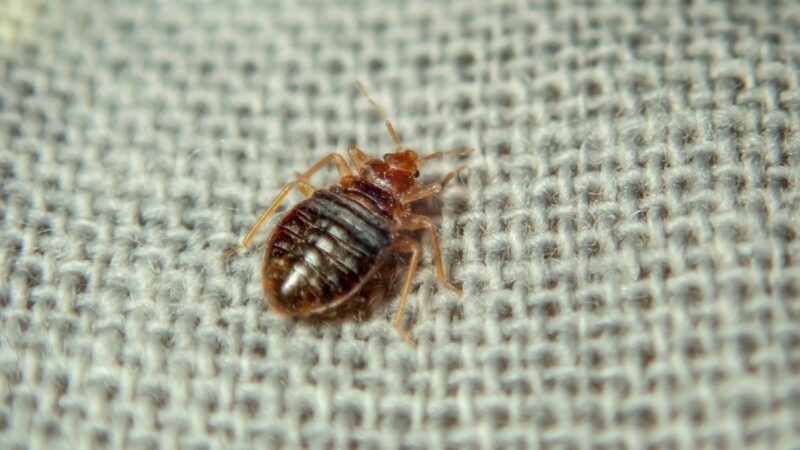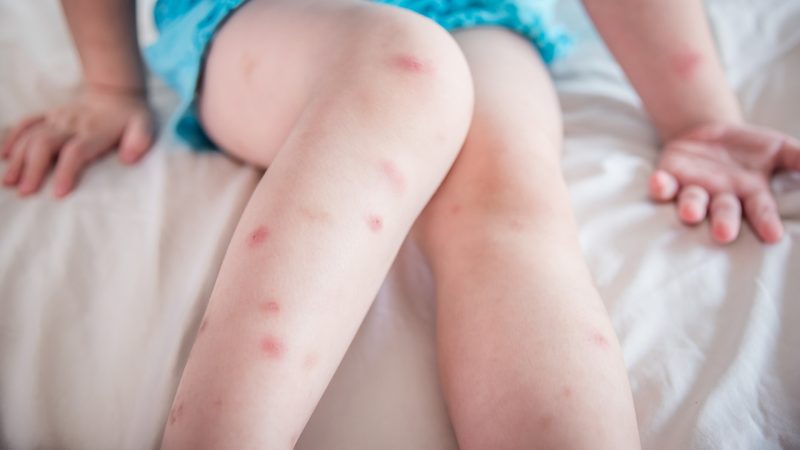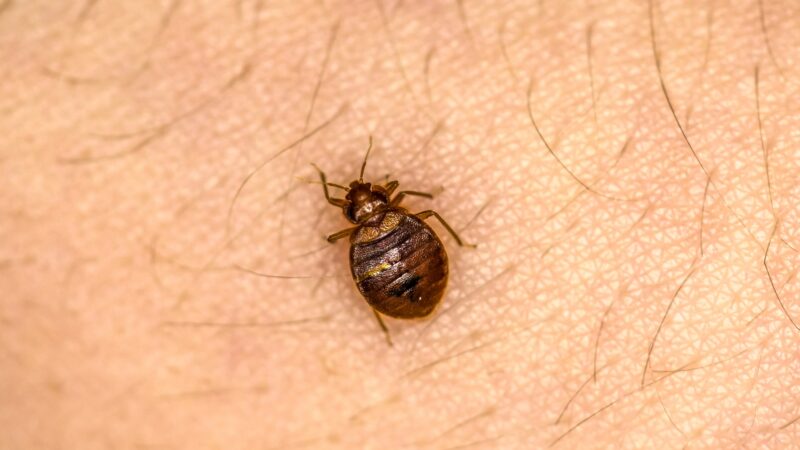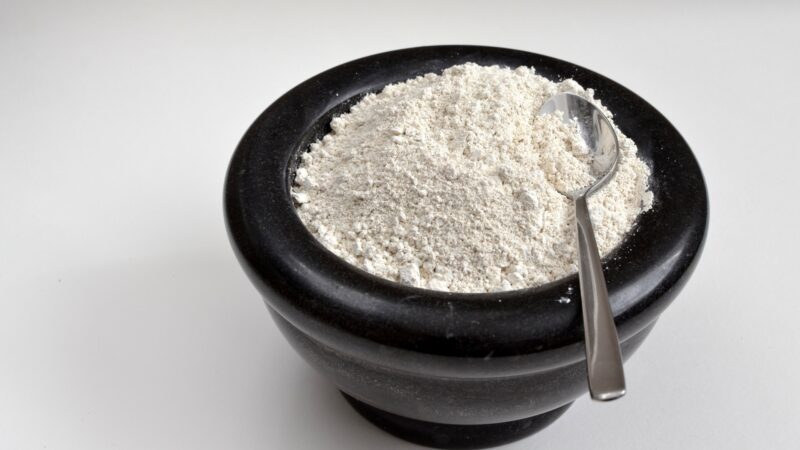Bed bugs, although not so big, go through three phases when growing up. First, they start as an egg and when they break the egg, they become the nymphs and after that period is done a bed bug becomes an adult.
What are baby bed bugs/nymphs? Baby bed bugs are called nymphs. They are smaller than adult bed bugs and are harder to spot because they are almost translucent. Just like adult bed bugs, nymphs need blood in order to survive and further develop into an adult.
In this article, we are going to take an in-depth look at baby bed bugs (nymphs) and see what makes them special compared to adult bed bugs. If you’re up for something interesting and you want to learn something new, we suggest that you stay right where you are and read the article till the very end.
What Do Baby Bed Bugs Look Like?

If you put a picture of an adult bed bug and a baby bed bug side-by-side, you’ll have a hard time noticing a difference. Sure, there are subtle differences but generally speaking, the body shape is almost the same. This is because metamorphosis isn’t part of the bed bug’s development, which is the case with many other bugs.
Can You See Baby Bed Bugs?
Those who have seen bed bugs know how tiny they are, and this makes it harder for some people to see them. If your vision is still at its peak, you can easily spot a bed bug, except if it’s not on a dark, black, brown, or grey surface.
Size-wise, bed bugs aren’t small and thankfully, most people can notice them. Unfortunately, they’re much harder to see and if your vision isn’t as good as it was, chances are that you won’t notice baby bed bugs.
If you see a bed bug, it’s probably an adult one because baby bed bugs can’t usually be seen directly. What most people see are the traces of baby bed bugs such as shed skin, fecal matter, and their eggs, if they just broke out of it.
What Color Are Baby Bed Bugs?
Color is the biggest differentiating factor that distinguishes baby bed bugs from adult ones. Baby bed bug color is between white and yellow, and sometimes, they’re almost translucent, making them very hard if not impossible to notice.
This is the color that they have as soon as they hatch but after their first feeding, the color changes. If you could see them, you could also see the tiny red lump in the middle of their abdomen, which is where they store food (blood). After the blood is digested, the baby bed bug sheds and grows larger.
As they drink blood, they start to turn brown and their translucency immediately gets decreased. This happens because the nutrients from the blood are used for various processes, of which the development into an adult is the most important. When the bed bug becomes an adult, it’s completely brown, thanks to the process explained above.
Do Baby Bed Bugs Bite?

Baby bed bugs do bite. Baby bed bugs need a lot more food than adult bed bugs because they need to develop. When going through the phases of development, nymphs can grow twice as big after each feeding! This is why food is necessary for them, as they would starve to death in a short period, unlike adult bed bugs that can survive a whole year without blood.
Given their rapid development, baby bed bugs need a lot of quality nutrients to grow. The feeding begins when the bed bugs hatch, so even those small baby bed bugs can taste your blood.
Baby Bed Bug Size: How Big Are the Bed Bug Nymphs?
| Nymph Stage | Size (Inches) | Size (mm) |
| First | 0.059 | 1.5 |
| Second | 0.078 | 2 |
| Third | 0.098 | 2.5 |
| Fourth | 0.118 | 3 |
| Fifth | 0.177 | 4.5 |
Having in mind that baby bed bugs are around 1.5 mm large, it’s easy to see why they’re so hard to notice. However, this is only their first stage, after which they grow by 0.5 millimeters in each phase.
When they become adults, bed bugs are around 5 millimeters (0.1968 inches) large, give or take. In the second phase, the baby bed bugs are three times smaller than the adults, from the abdomen to the head.
In the third phase, they are two times smaller than adult bed bugs but they have the same shape. When they come close to the adult phase, that’s when they get their well-known shape and size.
How Many Babies Do Bed Bugs Have?
Since nymphs are so tiny, it’s logical to think that female bed bugs can lay a lot of eggs in one day. On average, a female bed bug lays 200 to 250 eggs in her lifetime, while some can lay up to 500, given regular access to blood. Females that mate frequently will produce fewer eggs because mating causes scarring and requires some time to recover to reproduce properly.
Are Baby Bed Bugs Faster Than Regular Bed Bugs?

Since the exoskeleton in nymphs is underdeveloped compared to adult bed bugs, they aren’t faster. Even adult bed bugs don’t crawl very fast. For example, cockroaches and roaches are much faster. This is because bed bugs don’t need to crawl fast, as they prefer to hide in their harborage, rather than engage in fights with other bugs. Furthermore, they have very short legs, so they can’t achieve great speeds.
If they’re disturbed, they’ll run as fast as they can but once again, they’re not very fast, so you can squash them easily if you see them. Needless to say, nymphs are much slower and will rarely escape their harborage, except when they’re sure that they can drink your blood safely.
Can Bed Bug Nymphs Lay Eggs?
Bed bug nymphs can’t lay eggs but they get fertile very quickly, around 5 weeks after hatching. In five weeks, baby bed bugs go through all seven phases. The first phase is egg and immediately after hatching, they enter the nymph phase. In the nymph phase, there are 5 stages, after which the bed bug becomes an adult (final phase). The lifespan of a bed bug is six months, which is typical for pests.
Does Diatomaceous Earth Kill Bed Bug Nymphs?

Diatomaceous earth can easily kill both bed bug nymphs and adults. When it comes to killing eggs, it isn’t as effective.
As for killing nymphs, it’s even easier because they aren’t fully developed. Just as a reminder, diatomaceous earth kills bed bugs by peeling off their skin and dehydrating them. For example, if a bed bug crawls over diatomaceous earth, it will injure itself, start bleeding and die very quickly.
The bed bug nymphs are much more prone to that, depending on the stage. In the beginning, nymphs are a bit less active but once they reach the third or fourth stage, they will die from diatomaceous earth.
Diatomaceous earth is useful for eliminating a small portion of infestation, so we don’t recommend relying on it completely. It is recommended to use bed bug sprays or some heat treatments as well but if you are having a big infestation you should call professionals. Large bed bug infestations are very hard to completely eradicate.
List of Sources
Potter, M. Bed Bugs. Extension Entomologist, University of Kentucky College of Agriculture
Bed Bugs, Agriculture and Natural Resources, University of California
Koehler PG, Pereira RM, Pfiester M, Hertz J. (July 2011). Bed bugs and blood-sucking conenose. University of Florida, Institute of Food and Agricultural Sciences.
- How to Get Rid of Copperheads | Practical Guide - August 27, 2023
- How to Get Rid of Corn Snakes | What Makes Them Aggressive? - August 27, 2023
- How to Get Rid of Alligators | Safety Measures and Removal Methods - July 16, 2023
